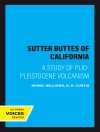Every four years the International Association of Geodesy meets at the IUGG General Assembly and this has always been an important event for IAG to make the point on where are we going as geodesists both in terms of scientific production as well as in terms of organization. The proceedings of IAG at the Sapporo 2003 General Assembly are the mirror of our scientific achievements, and, as Geodesy is a living entity like any other science, we could say it is a way to see the picture of what we consider our field of applications as well as of theoretical speculations. Let us examine this aspect in terms of what are: the object of our research, the methods we use, the general scientific results we can produce. • Our object: here I would like to use a pseudo-Helmert definition; the object of Geodesy is knowing the surfaces of the earth: the geometric surface by positioning and e.m. surveying, and the physical surface, i.e the gravity field, by land, marine or satellite gravimetry, and their time variations. This 'object’ is naturally interlaced with other physical properties of the earth both through deep processes affecting its surface and through the gravity field at all different scales from the global to the regional and local, where most engineering applications take place.
Spis treści
Symposium G01: Positioning.- Symposium G02:Advanced Space Technology.- Symposium G03: Determination of the Gravity Field; Gravimetry and Gravity Instrumentation; Gravity Satellite Missions: Data Processing and Applications; Satellite Altimetry for Gravity, Geoid and SST; Heights and Vertical Datums; Geoid Modelling.- Symposium G04: General Theory and Methodology.- Symposium G05: Geodynamics; Applications of GPS to Crustal Deformation; Gravity Applications; Earth Rotation and Geodynamics Techniques.- Symposium G06: Insight into Earth System Science: Variations in the Earth’s Rotation and its Gravity Field; Earth Rotation Interpretation; Theoretical Studies Related to Earth Rotation and Time Variable Gravity.- Author Index.- Keyword Index.










